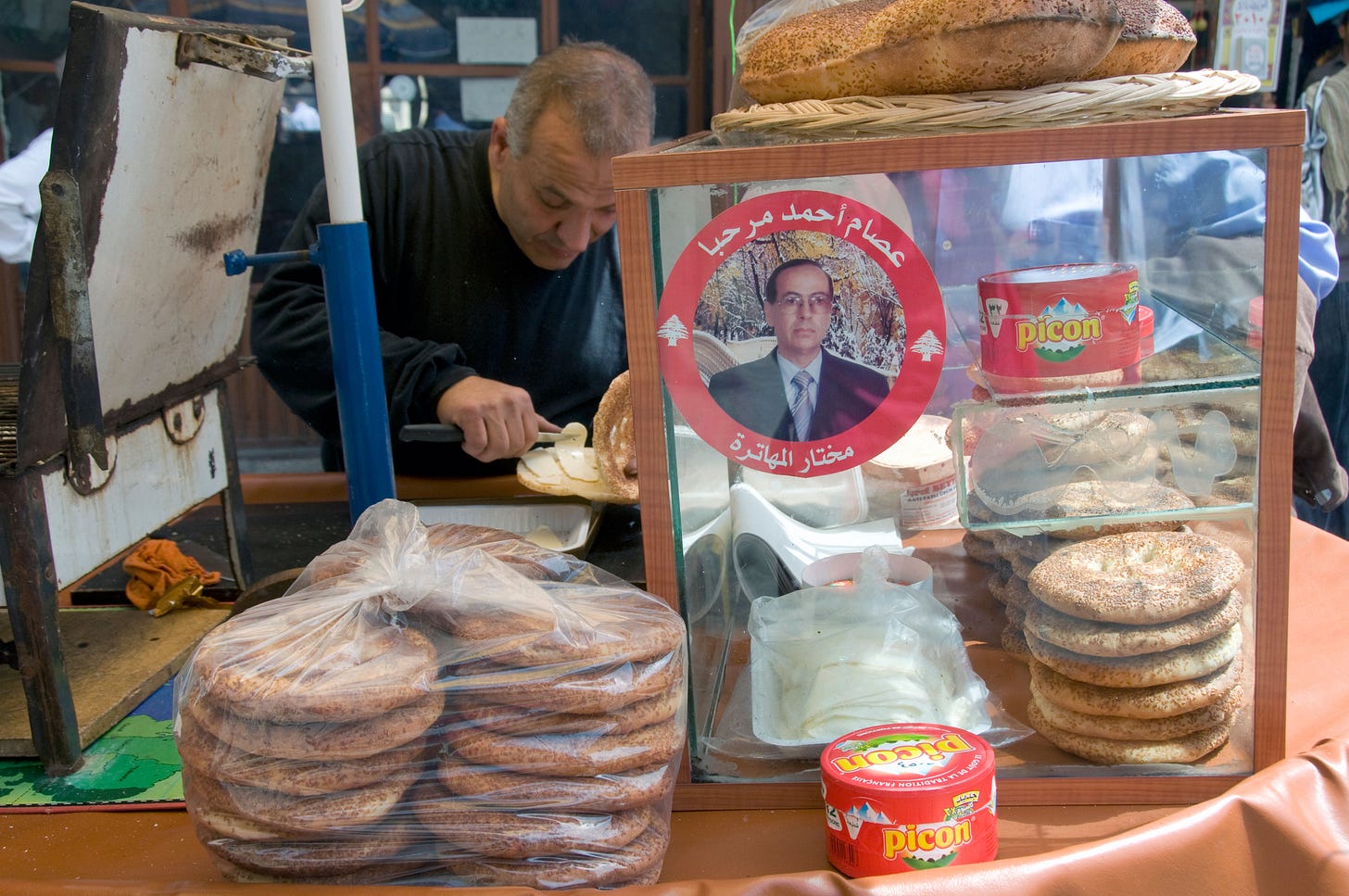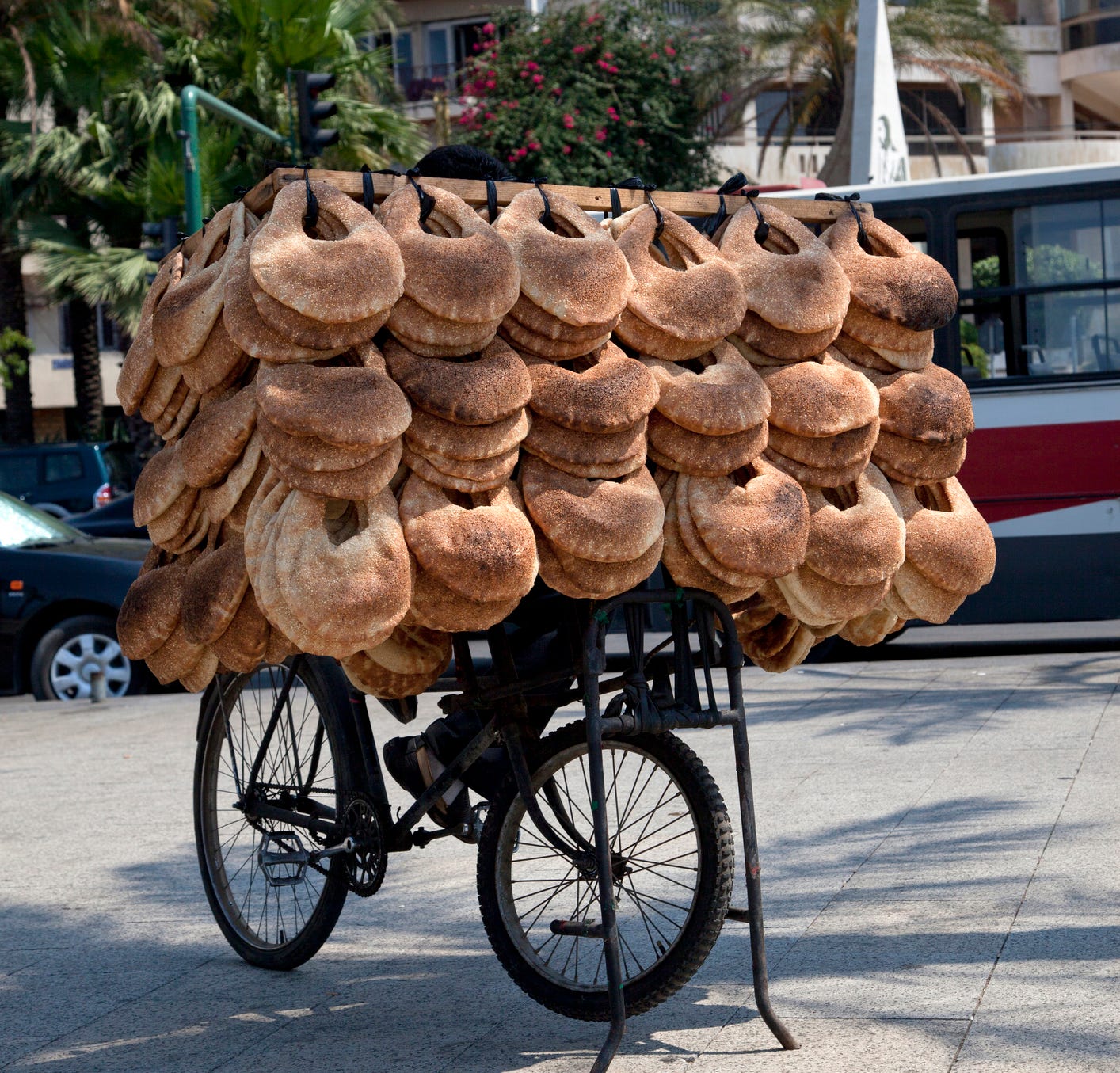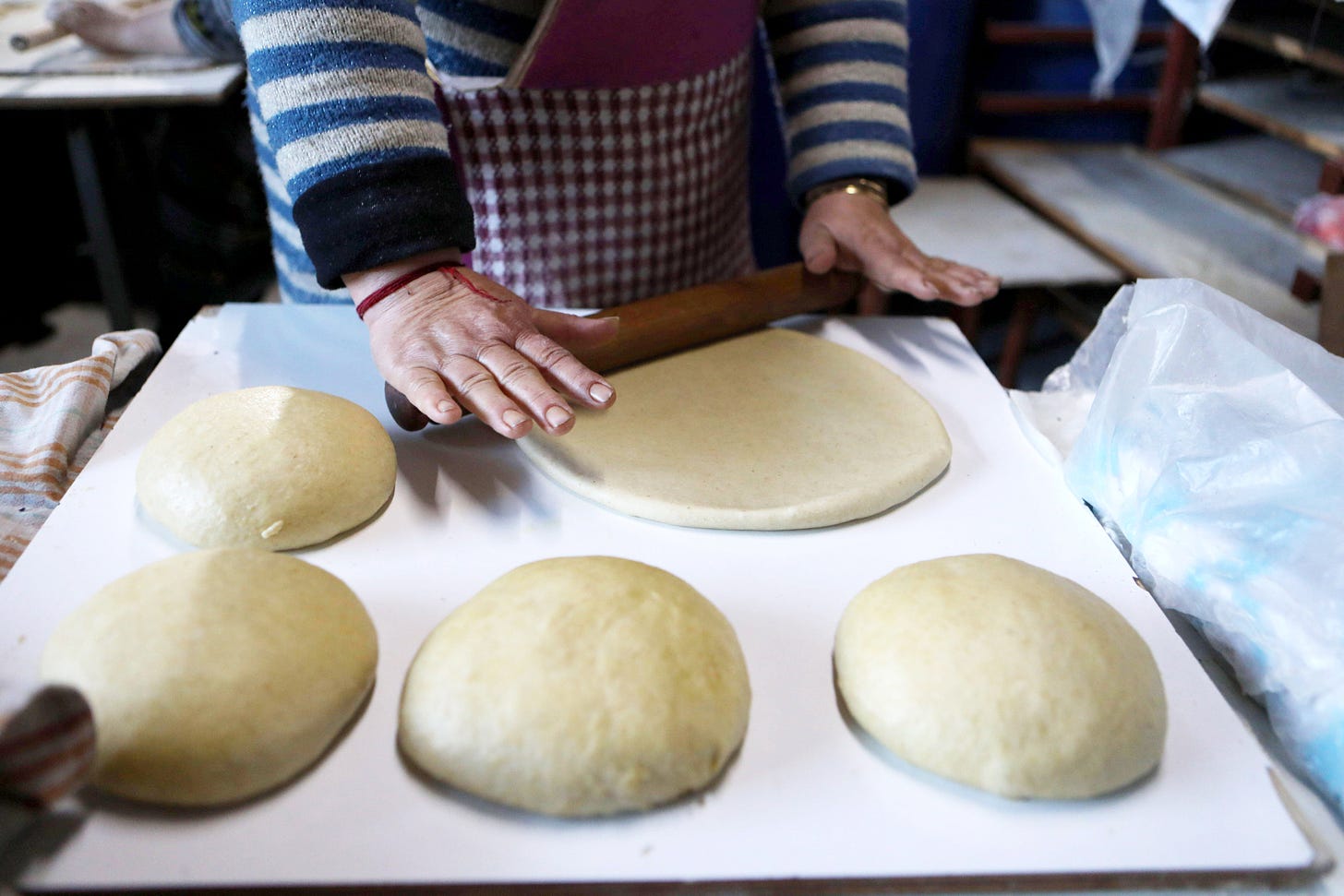Saving maltoot
and waging war on the Israeli bagel
One fine Sunday morning, shortly after moving to a hip town in upstate New York, I was assaulted by an Israeli bagel. It came at me from behind the glass of a bakery display cabinet in a hip café on a hip street in a hip area in town.
The café was brimming with liberal, vegan-looking New Yorkers in Birkenstocks, oversized lumberjack shirts, and grunge jeans. Still, I was not displeased by the ambiance. I had been worried about moving to rural America, even if in New York State. But it turns out this was not just a small town in rural America, but one full of progressive urban refugees from New York City more familiar to me than other Americans.
Despite the initial moment of ease entering the space, my heart raced as the line to the cashier took me past the bakery cabinet where a roll of ka’ak sat, impaled by a sign that claimed it was an ‘Israeli bagel.’
I was dumbstruck. At first. Then, that familiar rage I’ve lived with all my life bubbled up in the blood coursing through my Palestinian veins.
Ka’ak is a street bread commonly consumed throughout the Arab world (and Iran) that is baked in the shape of a large ring, smothered with roasted sesame seeds. There’s something salty and light but sweet and culinarily golden about ka’ak. It’s just the right toasty, yummy, crunchy crust on the outside with a fluffy, soft, airy white something we call lubb[1] on the inside.
Ka’ak is served warm by street vendors parked on curbs and intersections of thousands of busy streets in Arab cities. The aroma of the fresh rolls of ka’ak waft from vendors’ carts across Arab mornings, like Turkish coffee, awakening the senses and making taste buds dance.
Every morning, workers, students, taxi drivers, and passers-by line up as ka’ak vendors seamlessly split the warm rolls in two and mash up baked eggs that they spread in the middle. Some ka’ak vendors offer la vache qui rit (the super cheap, super sticky, super processed, super delightful laughing cow) or abo al-walad[2] picon cheese spread, for those who are not in the mood for baked eggs. More robust ka’ak carts offer hummus and falafel to make it a different kind of savory feast. The vendors always splash a dash of aromatic, zesty za’atar, sumac, or some other spice mix across the spread inside the ka’ak. The dose always just right.
Despite some debate on the origins of ka’ak, the first known reference to it was made in a book called Kitab al-Wuslah il al-Habib, which is a collection of 635 recipes (including three for ka’ak) compiled by an anonymous author in 13th-century Syria.[3]
Syria was once the name for the entire Levant anyway. So, Middle Eastern culinary experts agree that the origin of ka’ak is, generally, “Syrian.” Some blasphemers among these experts even dare to suggest that the Jewish bagel may be a descendant of the Arabic ka’ak roll.
It's kind of like falafel. Despite all forms of its co-optation, falafel is Egyptian. No two ways to that discussion. The now world-famous, deliciously deep-fried, vegetarian, chickpea pellet is from Egypt. Don’t believe anyone else’s claims to it.
Like so many other culinary delights originating from the region, ka’ak has evolved into various forms. The Lebanese version is called ka’aket ghabara or ‘dusty ka’ak’ because it’s sold in the streets, and it looks like a purse. Some Arab bakers make it long, like a stick. In Iraq, Palestine, and Jordan, it’s more round or oblong, and so on and so forth.
Whatever its shape, wherever it lives, is baked, and eaten in the region, there’s unity in the adoration of ka’ak.
And, ka’ak has been called ka’ak since the 13th century.
Except in New York, where ka’ak suddenly became an Israeli bagel.
The larger story of the Israeli pilfering of ka’ak is painfully similar to all that Israel has colonized and co-opted during its looting of Palestine and everything Palestinian, including our embroidery, food, farming techniques, land, villages, cities, properties, homes, orchards, water, and believe it or not, even our swear words.
It’s almost impressive how Israel constructed and sold Israeli culture to the world by co-opting all these parts of Palestine, its history, heritage, culture, cuisine, and even curses, in 75 seemingly ubiquitous years.
So, I have decided to fight back, the only way I know how, by laying claim to maltoot and its origins before the Israelis can swipe that too.
Maltoot?
Maltoot is a delicious, sweetened form of taboon bread that my uncle’s wife, who we call al-’Amriya[4], used to bake for me when I visited my mom’s village, Beit Ummar, on the outskirts of al-Khalil (Hebron) in southern Palestine. My aunts in my dad’s village, Halhul, a few kilometers south of Beit Ummar, make maltoot, too. But al-’Amriya particularly spoiled me and my cravings for maltoot.
Maltoot is not just a sweet bread, but a sweet memory.
I can still see al-’Amriya adding a spoonful of sugar to the flour, water, and salt, kneading the dough, massaging it into a big ball, covering it with a warm cloth, and waiting patiently by its side for it to rise just as it should. She rolls it flat, over and over again, and bastes it with olive oil, folding it over and over again, then bastes it again with olive oil. A labor of love.
I still smell the maltoot baking in the outdoor oven made of clay, olive branches, and pebbles in the garden where al-’Amriya baked bread every morning behind her house. I still hear the maltoot murmuring and bubbling over the little pebbles smoldering beneath it.
Maltoot is so nuanced in its taste, flakiness, and texture. It’s different from any other sweet, baked good I have ever eaten. I don’t know if it’s the spoonful of sugar or the layers of olive oil basted into its dough that makes the magic. I wish I could better explain how it tastes. It’s kind of like not being able to describe an almond croissant. There is nothing quite like it. It’s mouth-watering, finger-licking, soulfully delicious. It’s love at first bite.
I had always assumed it was a delight that every Palestinian knew, like knafeh. But, later in life, I discovered most Palestinians outside the villages that satellite al-Khalil, especially those from the cities, don’t know maltoot.
Perhaps that’s how maltoot has survived the ethnic cleansing and wholesale expropriation of all things Palestinian under Israeli occupation. It seems maltoot never really got beyond the simple ovens in the herb gardens of the tiny houses in our little villages with the big trees under the safe-keeping of the larger-than-life heroines of the Palestinian struggle, the fallahat.[5]
And, maltoot is, literally, the only thing I can think of that the Israelis haven’t discovered yet to pillage, expropriate, and co-opt as their own.
So, today, before all of you who are reading this, I hereby declare maltoot Palestinian.
I claim it for Palestine, the Palestinians, and the Palestinian cause.
By reading this statement, you will have acknowledged that I have inscribed maltoot into the representative list of intangible Palestinian cultural heritage, the way UNESCO did with Palestinian embroidery in 2021, to save it from the looting, co-opting hands of the megalithic, revisionist, occupational Israeli leach.
Maybe one day, Israelis will find a tunnel under UNESCO headquarters, only to discover maltoot and claim it as their own, based on irrefutable evidence documented in a video taken with the iPhone of a soldier from the Israeli army, shared with millions of viewers on TikTok, broadcast thereafter for official verification by CNN and Fox News, and covered by The New York Times and The Wall Street Journal to officially verify the official verification made by CNN and Fox News.
You are probably asking why anyone would bother protecting something like maltoot from Israel at a time like this, of all times.
Well, because it is this time, of all times.
As I write and you read this, Israel is killing Palestinians, not just today, or yesterday, or the month before yesterday, but now. As we sit in our homes writing, reading, eating, watching TV, sleeping, doing laundry, showering, brushing our teeth, or doing whatever it is that we do every day, Israel is murdering, detaining, and starving Palestinian women, children, the elderly, and yes, men. Even our men, like everyone else’s men, are someone’s father, son, brother, husband, uncle, or friend.
And, I can do nothing about it. I’m even restricted from protesting my rage as I bear witness to Israel trying to erase the Gaza Strip and all the Palestinians in it from the face of the earth.
I can’t watch the carnage anymore much less save a single Palestinian child, woman, elder, man, home, university, tree, donkey, or sheep for that matter, from the wrath of Israel’s vengeful killing machine.
The paralysis I have felt over the past 145 days and 56 years of my Palestinian life has come to a head.
I can’t save a single soul, much less Palestine.
In my grief, anger, rage, and desperation I find a moment of solace in saving maltoot.
Maltoot is Palestinian, Israel.
Keep your murdering, looting, co-opting hands off our maltoot.
[1] Lubb can mean pulp, marrow, core, or the heart (of the matter), etc. in Arabic.
[2] abo al-walad picon cheese translates to “the one with the boy.”
[3] Roden, Claudia (2000). The New Book of Middle Eastern Food (Revised ed.). NY, NY: Random House, Inc. p. 401
[4] There’s a great story behind al-’Amriya’s namesake I’ll share with you, another time.
[5] Fallah (masc.) or fallaha (fem.) are the words for ‘farmer’ in Arabic. Fallaheen is the masculine plural while fallahat is the feminine plural.
CREDITS
Photo: Ka’ak vendor: Julio Etchart/Alamy Stock Photo
Photo: Ka’ak vendor/bicycle: tekinturkdogan
Photo: Woman in Halhul making maltoot: Imago/Alamy Stock Photo






Love you.
I only just now finally read this and I loved it. ❤️